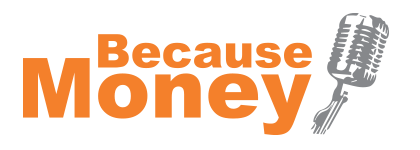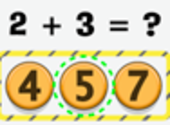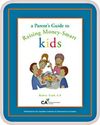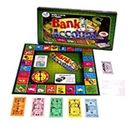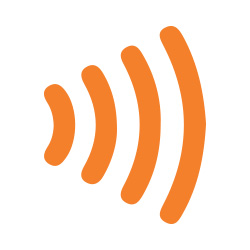Teaching Kids About Money
On episode 24 of the Because Money Podcast we are joined by Caroline Munshaw and Jenni Bolton of Cent$ible Students. They are self-proclaimed “money-moms” and work with kids in the school system from K-8 teaching financial literacy.
Cent$ible Students provide in-class financial education workshops for students from Kindergarten to Grade 8, helping them understand money-related issues like budgeting, credit, banking, and saving through stories, activities, online tools, and games.
Founders Jenni Bolton and Caroline Munshaw bring leading edge experience in financial literacy from their work with SEDI’s (now Prosper Canada) Canadian Centre for Financial Literacy and over 20 years of experience in business, banking, and community organizations.
Our cracker-jack investigative journalism has also uncovered that neither Jenni nor Caroline like blue cheese or Doctor Who.
Below the transcript is a resource list, you should probably go and look at it.
Transcript:
Jackson: Jackson Middleton
Robb: Robb Engen
Sandi: Sandi Martin
Jenni: Jenni Bolton of Cent$ible Students
Caroline: Caroline Munshaw of Cent$ible Students
Jackson: Hey everybody welcome to another episode of the Because Money Podcast. I’m Jackson Middleton, one of your hosts. I’m joined by Robb Engen and Sandi Martin. This is Episode 24. Actually we’re celebrating an anniversary, I guess, as we’ve been on the air for just about a year. Twenty-four episodes, not bad, one every couple of weeks.
So we’ve got some special guests today, and I’ll just hand it over to Sandi. Why don’t you make an introduction and we’ll get rolling on financial literacy in schools.
Sandi: We’re really excited today to be joined by Caroline Munshaw and Jenni Bolton of Cent$ible Students. They operate out of Toronto and I’m actually just going to let them explain who they are and what they do. So ladies, to you.
Caroline: Great, thank you. Thanks so much for having us tonight. Cent$ible Students is an organization that we started and we just love it. It’s a ton of fun. We work with students from kindergarten all the way to grade 8, and we do interactive workshops in the classroom, helping students learn to manage their money.
So our focus is saving money, spending it sensibly, so we just get them to get that play on words, and to share their money. So that’s a little bit about our organization. So it’s me and Jenni, the dynamic duo. [laughs]
Sandi: So can you give us a little bit of background. Were you having lunch one day and saying let’s just start this, or…?
Caroline: Sure, so we met at an organization for financial literacy. It was called SEDI and now call Prosper Canada. So working with adults and financial literacy. And when we were working there, we really saw the need for starting young. Everyone we worked with said, “If only I had this information when I was younger. If only I had learned this earlier, I’d be in much better shape.” So we said let’s make sure that young people have access to this information.
And most of us, if our parents didn’t teach us how to manage our money, we didn’t learn it. So we wanted to make sure that they have access to this through the classroom.
Robb: So what’s your process with getting into the schools? Are you knocking on doors or do you have some kind of an in with the local school district, or how did that start for you?
Jenni: I can answer that. Ultimately, it’s a lot of our money moms, I would say. We used our mommy network, and really it’s about word of mouth. Letting people know that we were embarking on this new adventure and getting the word out. We did a lot of piloting in our own children’s schools. Then it was trying to make connections to the individual schools, and do as as much marketing and outreach as we could. We would go to parent conferences, we would go to math conferences, and just try to make that the proper connection.
So we’ve really hooked up a lot with the TDSB. There’s a steering committee and they were very advanced compared to some of the other boards around the issue of financial literacy. And they came in and saw what we did and have reviewed all of materials. So we’ve been working quite closely with them. We do a lot of work with private schools as well, and also a little bit with Toronto Catholic District School Board. We’ve also done some interesting partnerships with, for example, Rama First Nations. We’ve done some work with for KICKS, which is an organization that works in the Jane-Finch area. So it just kind of keeps expanding as word gets out.
Jackson: So are you guys a for profit organization, or not-for-profit? How does that work? Do you charge for the program to the families, the students, school boards, teachers, bus drivers? Who pays for it? We know the students benefit, but who pays for it?
Caroline: Do you want me to get this one, Jenni?
Jenni: Sure.
Caroline: So, it’s Jenni and I, in a partnership. We both have not-for-profit roots. We kind of operate as a not-for-profit, but it’s just been simpler to keep it as a partnership though. So we do charge $225 for a two-hour workshop. And mostly the cost has been covered by parent council. So parent councils are raising funds for extra programming in their students’ classrooms. So they’ve been paying for it.
Some schools have a budget. A lot of budgets have been cut, but some schools do you have a budget to have some extra programming for their students. And sometimes students are each bringing in a certain amount of money to cover the cost. So it varies, but it tends to be the parent councils that are paying for it.
We’ve also been very fortunate to receive some grants through the TDSB. The TSB has received grants to provide financial literacy and they have asked that we deliver that programming. So that’s been fantastic because then that goes out to all the schools in the Toronto area and they have access to that programming.
Jenni: Can we share some exciting news?
Robb: Sure.
Sandi: Yes!
Jenni: We actually just met with the Toronto Foundation for Student Success today, and they’ve received some funding from the Actuarial Foundation of Canada. So we will be, for the next three years, delivering some workshops. We’ll be in their “Beyond 3:30” program. It’s a beautiful program, helping students in schools that are sort of at risk. So it between 3:30 and six o’clock, they go, they get a snack. Actually, they prepare their snack. They learn financial literacy as well. Of course, we’re going to be providing our workshops, and they’ve also worked with Prosper Canada in the past and developed a board game. So we’re very excited to be working with them because I think there’s definitely the need within that program. So we just signed the contract today, so we’re excited to embark on that.
Robb: That’s awesome.
Sandi: That’s fantastic!
Robb: So it’s Financial Literacy Month this month. I’m dying to ask this one. One of the default answers we always hear, “We need to improve our financial literacy”, “They ought to teach something in school.” And so what are some of the challenges from the teachers’ perspective and is this the route we need to go, to outsource these workshops? Are teachers equipped to be doing this on their own or putting it into the curriculum themselves, or is this a more natural movement to outsource this into smaller workshops?
Jenni: Caroline or I could go. We’ll just alternate.
Caroline: So it’s both. It’s integrated in the curriculum. The Ministry of Education, there’s a programming that’s in the curriculum already. Most teachers that we’re speaking with, there’s so much in their curriculum that it’s hard for them to be adding to that.
We’ve also found that it’s really nice to have another voice coming in. So even when the teachers are, if they are able to integrate financial literacy in their curriculum, it is really nice to have some other voices come in and reinforce the same messages. I’m sure we find us with our parenting, with so many things they’re hearing it, the same concepts from different people and also through different methods.
So we come in, so very interactive and fun, and it’s lots of energy, and it’s a little different than what’s normally in the curriculum. So we find that as well, so it’s a complement to that.
Jenni: Actually, I’m going to add that the teachers have commented that it’s a great opportunity for them to actually sit back and assess how the students are doing with the topic. The other thing that we provide is post-resources. So others have said, “Great, now I’ve got some exciting ways that I can be presenting the material,” and then we leave them with websites and activities and other things they can do to continue to learning.
So you know, being in the classroom is just one part of it, and what we hope is that it’s also being enforced at home. We do send a letter home, as well, with some links and information. We do have a Cent$ible Families workshop, and that came because, again, parents are saying, “How do I talk to my children about money?” So many schools will get the parent reaching out grants, and have us come and do a special event in the evenings.
We have two ways of doing it. Either just the parents, where we talk to them about allowance and all kinds of different issues, or the one that’s really popular is when we do the kids and the parents together. So we set up some of the stations, some of the activities we’re actually doing in the classroom, and have the parents go through the activities with their children so we get that conversation started.
So it’s got to be in the classroom, it’s got to be at home. Also, on a larger scale, things need to be done, so that’s not only with the government but private sector, nonprofit sector. There’s no single solution, obviously. There’s many ways that we can built financial literacy among Canadians.
Robb: Well that’s great that you give the tools to the parents and teachers to continue that after the workshop is done. That’s awesome.
Sandi: So what do some of those activities look like? I’m always very curious what happens kind of inside the classroom. It’s one of those things I don’t get to observe very often. So obviously it would be different kind of activities with the kindergarten students or your grade 8 students, but what does a kind of typical workshop look like for you?
Caroline: So we usually have about three different activities. So I’ll give you a couple of examples. In each two-hour workshop we do about three activities—very interactive and mostly group activities I’ll give you one example, in grade 4 we are showing kids how to you use an ATM. We’re not actually going to an ATM, but we have is awesome online tool that we’re able to show them how is it that this works. And we start to have that discussion about how money is not coming out of this magic machine and this magic card that is unlimited. We discuss that.
In grade 5, we do a budgeting workshops, and they’re creating a pet budget. So they’re saying okay we’ve agreed that we’re going to take care of this pet. Do we have enough money to pay for it? And they get some pretend income and we work on expenses. Then we have chance cards, okay you’ve got your income is going to cover your expenses, but what happens when chance comes your way? So they have to figure out what happens when those unexpected events happen and how you’re going to cover that. So that’s a couple of examples. Jenni, do you have some others that you wanted to add?
Jenni: Yeah, sure. Just let you know, they are linked to the math curriculum, so teachers love that, the fact that we are making sure that it meets those requirements. But it’s really fun, like in the kindergarten we get them doing the money pokey and lots of active things. So that’s one of our favourite ones. The other thing that we love to do in the grade 7 and 8 workshop is finding money. You can do this with adults as well. It’s just having them add up the cost of certain things, per month. So instead of giving them their own things to think about, because they may not have a lot of disposable income, we give them characters. So they may Howard, or they may have Suraj, and they have certain spending habits, and they have to add them up.
So if you buy a hot chocolate every day after school it’s going to add up. So we get these “aha” moments. I love to tell the story of the grade 8 boy, and he was in the back of the classroom and all of a sudden he’s like, “My iPad” and I’m like “What?” He goes, “Well I’m like Howard. I buy whatever treat on the way home every day after school, and I’ve been wanting an iPad. Well it added up to $56 per month, or $680 per year.” Ta-da, there’s his iPad.
So it was really a great moment for him because he realized that these little tiny expenditures add up, and it’s the finding money in your budget in order to be able to achieve other financial goals that you have, which is just fun.
Jackson: And how awesome is that, that he figured that out in grade 8. I caught on six months ago. [laughs] I’ve got to stop going through drive-thru at Starbucks, and I could buy a car with that. But yeah, that’s kind of awesome.
So do you have material that is specific to every grade, K through 8? So materials that integrate with the curriculum?
Jenni: That’s correct. Every grade is a little bit different, and they build upon each other, but they’re also standalone. You know, it would be great if a school had us come in every year and the students learn a variety of things, but they can also have us just come one year and it’s sort of a standalone workshop as well.
Caroline: So as an example, in grade 4, the number sense and numeration, they’re meant to make change. They need to be able to manipulate a $100 bill. So we give them a play $100 bill and they’re buying items for $100. They get to choose, and the partner makes change. So we link it that way to the numbers sense and numeration in grade 5. It goes up to $1,000, and so that’s that. That’s the specific link there, is the number sense and numeration.
Robb: So is it just the two of you running these workshops? How busy are you, how stretched are you right now and where do you go from here? If you sign up another school district will you need an army to deliver this?
Caroline: [laughs] Yes, right now it is the two of us. It is the two of us right now, and when we do get busy we have hired one woman, and we’ve trained her. Well actually two, I guess we’ve trained to do those workshops when we do get busy. But right now it is the two of us.
Robb: So are your plans to take over the nation or anything?
Caroline: [laughs] We’re actually, for now we’re sticking with Southern Ontario.
Robb: Because we need you here in Alberta.
Caroline: I know, I know. We love that.
Jackson: I have a great idea for you. All you have to do is go on Dragon’s Den. And they’ll call you absolutely crazy for trying to do something that he’s already done once, and then you’ll have a bunch of actual people who are real people kind of loving what you’re doing and wanting to bring it everywhere else in Canada. Use Kevin O’Leary calling you guys idiots to your advantage.
Robb: He’s not on it anymore. That won’t work.
Jackson: Oh he’s not? Well then you’ve got to go on the Shark Tank or something. Has he sold out? He’s not even on Dragon’s Den? Oh that’s right, we got that cook guy, who’s always taking about his palate. I love that guy.
Caroline: Vij.
Jackson: He’s awesome. I see him on the Food Network.
Robb: We’ve lost Sandi now.
Jackson: That’s always his palate. Anyway, sorry about that. So you’ve got to get him to tell you guys you’re crazy.
Robb: I’ll get us back on track here. So you’ve received grants and you’ve got this new partnership, which is excellent. So with this new financial literacy movement and the financial literacy leader that was appointed, Jane Rooney. Do you have the ear of Jane Rooney and her committee? Are you plugged into what’s going on there?
Jenni: Actually, we know Jane Rooney quite well from our work at Prosper Canada. So she certainly knows what we do. Anything that they do has to be on the national scale. We’re just not quite there yet. But our work in Prosper Canada has allowed us to keep very, very connected to what’s going on in the sector.
We try to keep up with what’s happening and we want to make sure that what we’re providing is definitely “value-add”. It may evolve as things change and maybe we can come up with some new ideas to provide things on a wider scale.
Sandi: So did you hear the announcements today about Junior Achievement? The Junior Achievement program, how HSBC is now one of the organizations funding Junior Achievement in schools, and TD is doing it as well of course, they’ve been doing that for a long time and now as well. Did you hear any of that stuff today? Probably you were busy. [laughs]
Caroline: We are aware. I mean, Junior Achievement’s a much, much larger organization, most obviously, they’ve been around a long time. And they have a Dollars and Sense program, which is targeted for grade 7 students. So although, I guess in a sense they’re doing a similar thing, they’re program is full-day, it’s done by volunteers. There’s a lot of differences. I’m sure there’s a lot of similarities as well. But they also have other workshops like young entrepreneurship and career and such, whereas we’re just focussed on the financial literacy. And as I said, we’ve tried to make ours really connected to that math curriculum.
Obviously though, on a larger scale we’re not there yet. And we haven’t made any partnerships with kind of banks because sometimes the school boards aren’t comfortable with that. It’s not like we’re going out and promoting one bank or the other. But they’re so large that they get funding from multiple places, so it’s kind of a little different.
Sandi: Do you do you have an opinion, or do you want to share an opinion if you have one, about banks and financial institutions offering financial literacy in schools and to kids who might not be aware of who’s offering the program?
Caroline: I guess it’s just that whole impartial advice, so that would be as long as if it’s an individual going in and providing the information. As long as it’s not tied to a product or pushing any products at all. I’m not too worried, but as long as it’s unsolicited, not giving that advice piece and pushing any certain product.
And a big part of what we talk about is that spending sensibly and that sharing with others, and it’s very much that we’re not doing this so that people are necessarily rich. We really wanted to do it as that holistic, so that you’re not worried about money, so that you can manage your money so you can enjoy your life.
I had a student say, “Are you rich?” when I started out in the classroom. We’re doing this so that you can have that full life and live your life and not be worried about your finances. You’re enjoying the rest of your life and not being preoccupied with it. So it’s a real full picture that we provide. And so I think that’s really our differential.
If it’s someone going in from a bank, as an individual they’ve got their philosophy and their outlook. Both of us are very much that focus on kind of a holistic view of money as well.
Jenni: Yeah, we’re not like the book “Rich Dad, Poor Dad” or that kind of like how can you invest to make the most of your money. Obviously we do have one workshop on investing, but it’s more about introducing the concepts and the compound interest and those kinds of things. But as Caroline said, our philosophy is that we are from the non-profit world and we’re just wanting to impart exactly what financial literacy is: knowledge, skills, and confidence. And we hope that the students will then be able to be more familiar with all the terminology and the concepts, be more confident asking questions and knowing where to go for more information and resources.
Robb: So who’s responsibility is it to teach financial literacy? What do you say to people who ask that question?
Jenni: It comes from many places. That’s, I think, what I was alluding to earlier in that it’s not only is it important to get it in the school system. So many people said, “I never learned that at school,” so it’s fantastic that it’s now being integrated into the curriculum. Whether it’s enough, I don’t know, it will wait to be seen. It’s just kind of starting. So the school system’s really important. It has to come from the parents as well.
But the problem is most Canadians, are they as financially literate as they should be? Probably not. So you’ve got to get other sources. At Prosper Canada, for example, they’re often trying to make sure that the systems are providing information in a way that’s accessible to Canadians. So making sure that banks, making sure that institutions—think about taxes and making sure people understand where they can go to get help with their taxes, where they can go to get information that is meaningful to them, because that’s the problem. Sometimes it’s not suitable for that particular individual.
So making sure that many systems—as I said, the private, public, non-profit—everybody need to kind of make sure that the information is accessible and appropriate.
Caroline, do you have anything to add on that one?
Caroline: Well I guess I keep going back to that part of it that it’s the impartiality, so that’s one of the things I like about some of the government sites is that you know it’s a trusted source and it’s not tied to a specific product or a specific agenda. It’s a broad information, but a lot of it as we’re in the classrooms and as money moms, we call ourselves “money moms” is that it is a lot with the parents. Because that brings the values into it. So if you’re taking about what are your values around money and what are those concepts, the softer concepts that you want to teach your children as well?
So they need to have access to some of the skills and the knowledge of bringing some of that softer side, the parents definitely need to be involved as well.
Robb: Can you share some of those website? Sorry to cut you off there, Jackson. Can you share some of those websites with us, for parents to go to or kids to go to, to learn more or reinforce those concepts?
Caroline: Sure. Do you want us to say it right now, or do you want me to send you one? Well one of the ones we do, we love FCAC. It’s got fantastic information. FCAC’s fantastic. The Investor Education Fund, they’ve got some fantastic resources as well, for teachers as well as for parents. What are the other ones that we have that we list?
Jenni: CFEE,
Caroline: Oh yeah, CFEE is great.
Jenni: Talks to kids about money. They have a new day in the classroom as well. They have resources for parents and for teachers online. I’m trying to think of what else at the moment. Even some of the bank ones do have some great information and they’ve made it for children and for parents, so they’re worth a look at.
Oh, and Citibank. They have great resources that we’ve used.
Caroline: And then those Cha-Ching videos. I love them. I found these last year and it’s an Asian bank and it’s called Cha-Ching. And if you just google “Cha-Ching videos” they have about 12 different videos. They’re about three minutes long and all on different subject. So I find that that’s fantastic for parents and teachers alike, and we use them so that you can start that conversation, get the kids really interested and then have dialogue after it. So they have all different topics. Saving, banking, and all sorts of different topics.
Sandi: Maybe what we can do actually after this, in the next couple of days, maybe we can work together and we’ll just compile a little list that we can add to the transcript.
Caroline: Sure, so we have that available. That’s what I was thinking that maybe we can just send that to you. That’s what we provide to the parents and the teachers. We can do both for sure.
Jackson: So I’ve got a question. What level do you feel these kids are at? You said you had the one kid who had the “ah-ha” moment about the iPad. But when they’re making change for $1,000, are they struggling, or are they getting it? And I guess and the second part is, is K to 8 enough? Do you have a plan to expand into high school, or is that just kind of you’re hitting the early years, really hyper‑focussed on where you guys are at, and making sure they understand that.
Jenni: Well, I’ll answer the first question. The first one was “are they getting it?” It really depends. [laughs] I mean, you see all things. You see some who are amazing. You can tell they’ve been having a lot of conversations at home or they’ll raise their hand and say my mom or my dad, or somebody works in the bank, or they’re an investor. So you can get somebody who’s extremely knowledgeable and you can get others—I had one child in grade 4 say “I’m not allowed to touch money. I’m not allowed to use money.” So it’s a real range.
In terms of why we’re focused on K to 8, and that’s mostly our marketing or business plan, and that’s because there’s a lot more out there for the high school students. And we really thought you know what, we had young children at the time and we went “Our kids get this”. If we start talking to them about it now, they’ll have a basis by the time they get to high school. Again, we’re trying to build on it and make sure that when they do hit that age where they’re managing their own money, they have the tools and resources they need.
Caroline: I was in one classroom and a little boy he was in grade 2, so he got it. We were talking about needs and wants and he had said that his sweater got wrecked and his teacher had said, “Oh, you better just get rid of that. You better just throw it out.” And he said, “No way, my dad works three jobs. My dad is working three jobs to pay for this stuff. I am not. I’m gonna go home and I’m gonna help get my mom. We’re gonna fix this up.” So talking about getting it, he gets the concept of yeah, someone’s working hard for this and I’m not gonna waste it. I’m gonna take care of this.” So it’s amazing, some of the things that they get at a young age, it’s pretty incredible.
Robb: So, my daughter just turned 5. How much should be giving her?
Jenni: We usually get that question. So there you go.
Caroline: So the idea from all the research that we’ve done for allowance, is that it’s great that she starts to handle money. Just the concept to just to really start to be able to handle it. The idea is it’s whatever you’re willing that she would be paying for. So you work out what she would be paying for with that amount of money and then that’s what you decide. So probably at age 5 she’s not going to be buying her clothes just yet, but maybe she’s buying little presents for her friends or whatever that is. You determine that. So the idea is that you wouldn’t be spending. It’s not going to cost you money to give allowance, it’s that you’re transferring responsibility. So she’s now going to be responsible for buying that item and then she decides.
So it’s really not the right time, there’s no magic, “Oh, she’s 5, it’s $5 a week” It’s whatever it is that she’s going to be spending. And then she decides, right? It’s her money. When it becomes her money, she’s going to be, “Oh, well maybe I might not buy it then,” right? “Maybe I’m going to wait for next time.” How’s that for an answer? [laughs]
Robb: I like it. And when should I start tying chores to her allowance?
Jenni: Ah, I’ll answer that one. Yeah, that’s interesting. There are many philosophies around allowances, and some do like to tie chores to it because they say they get the concept of earning money. Most say it’s better to not. Again, whatever we present to the parents, we always say, you know what. You have your own values and attitudes around money, and ultimately you’re going to make the decision. We’re going to give you a few different theories, a few different ideas, and you’re going to choose. But ourselves, we don’t use the earning philosophy. It’s much to manage. And again, we have the piggybanks with save-spend-share, so my 13‑year‑old does not get a full $13, because I would be broke, but he gets his money and we kind of halve it. And some of it goes in a save jar and some of it goes in his spend jar, and some of it goes save‑spend‑share. It’s called a “Moonjar” actually.
Robb: Yeah, I bought one last year. They’re helpful in teaching that concept, for sure.
Jackson: Well, we’re running up to about a half an hour, so I think Sandi’s got one more question. She’s smiling and she wants to ask one more question and then I think we’re out. No, Sandi doesn’t. Okay, so we’ve got to do a lightening round. This is where we ask you very quick questions and you have to answer immediately, without thinking.
So, do you like blue cheese?
Jenni: No.
Caroline: No.
Jackson: Oh, I was really liking you up until this point. [laughs] Sandi, ask a question, here we go.
Sandi: Do you watch, Dr. Who?
Caroline: No.
Jenni: No. I think we’re losers. [laughs]
Robb: Is the groundhog going to see his shadow this year?
Jenni: Oh I hope so.
Caroline: Me too. [laughs]
Jackson: Thank you, guys. I really appreciate it. I learned a lot. That’s pretty cool. I didn’t know you could teach money to kids. With four kids, I should probably find some. Here’s a question. Do you ever take your curriculum out for home-school people, or is it just in the school systems?
Caroline: You’re a genius. Oh my goodness. The answer is no, but that’s a great idea.
Jackson: We’re home-schooling our kids. We’re got a five-year-old, a four-year-old, a two-year-old and a four-month-old, and we’re home-schooling kindergarten right now, and we’ve kind of started introducing some money concepts to our kids. Mostly it’s just don’t manage it like your parents did and then you’re on your own. But have you ever thought about rolling out some material or curriculum to the home-schooled?
Caroline: No, but that’s a great idea.
Jackson: Okay, if you need a franchise partner, just see me, right here.
Caroline: We’ll go on Dragon’s Den together. We’ll go Dragon’s Den together.
Jackson: Yes.
Caroline: We’ll get together with it. [laughs]
Jackson: I’ll get called an idiot. Right on. I always wanted that to happen to me. Cool, well I think we’re done, unless anybody else has something interesting to say.
Jenni: Just one thing—thank you very much for having us.
Caroline: Yeah, thank you.
Robb: Thanks for coming on.
Caroline: And happy Financial Literacy Month.
Robb: Yes, keep up the great work.
Sandi: That’s right.
Jackson: Thanks guys. Good-bye.
